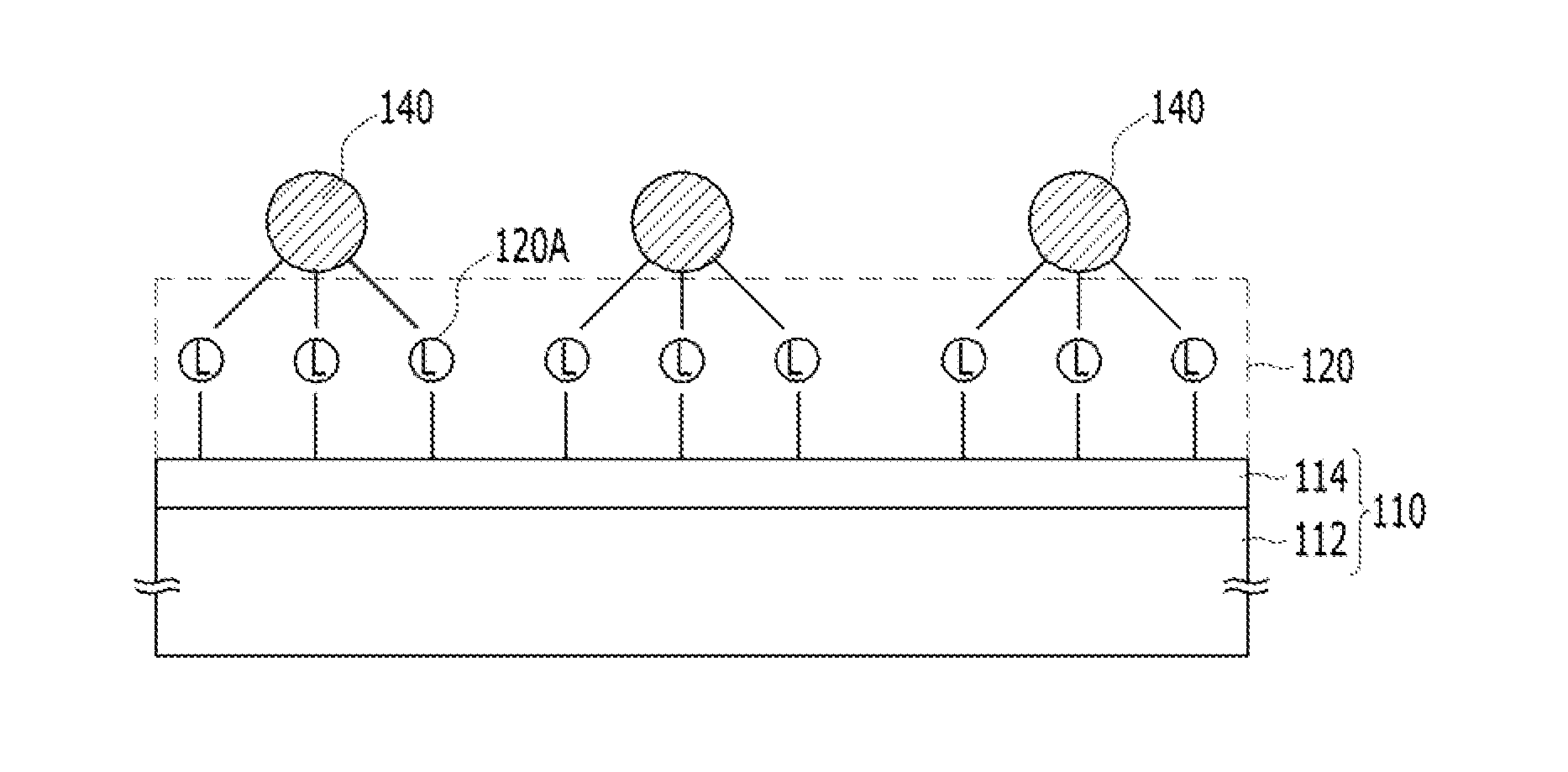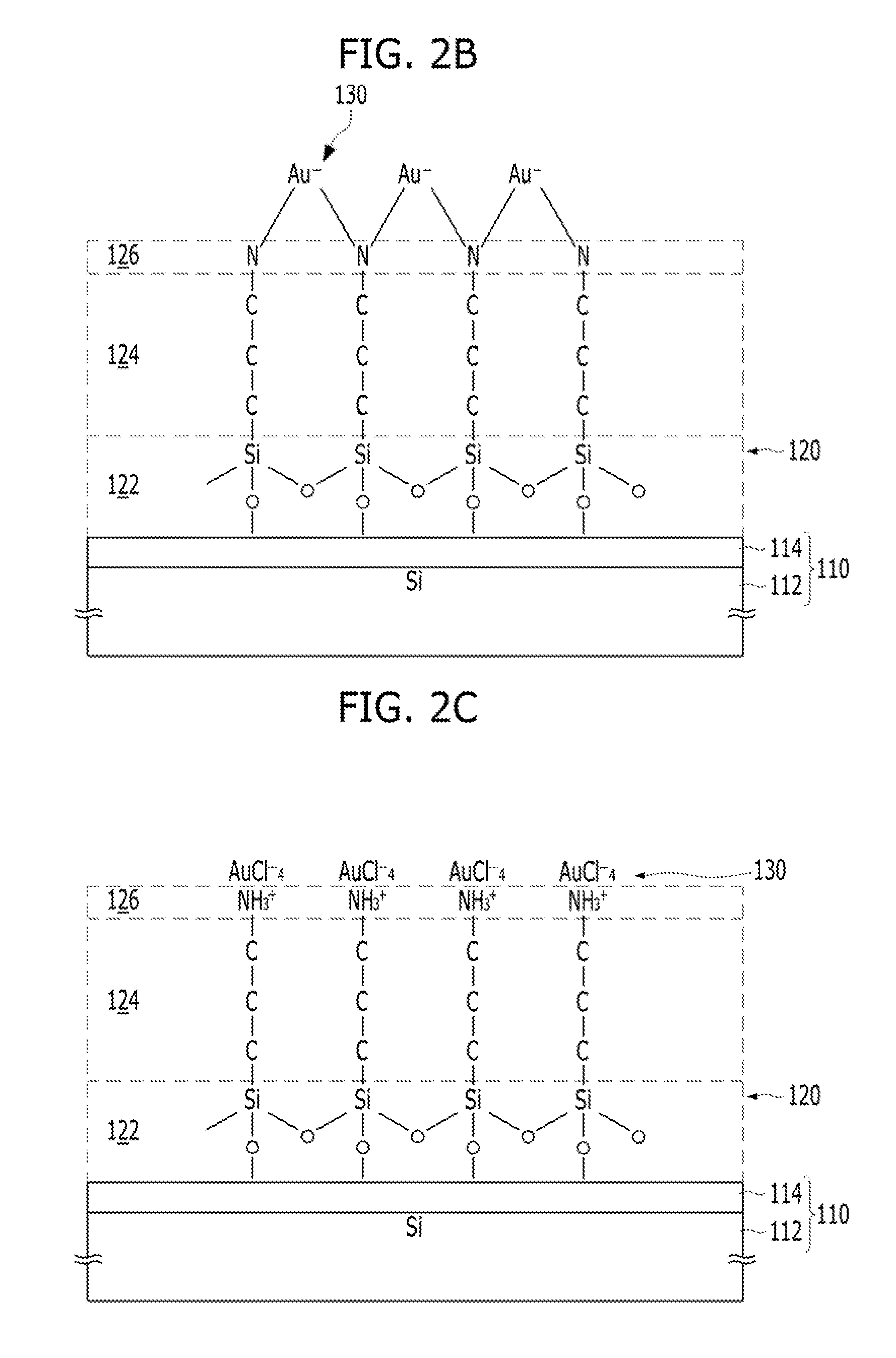Sensor including flexible nanostructure and method for fabricating the same
a technology of flexible nanostructure and sensor, which is applied in the direction of paper/cardboard containers, instruments, transportation and packaging, etc., can solve the problem of limited ability to apply the technology in mass production, and achieve the effect of simple fabrication process
- Summary
- Abstract
- Description
- Claims
- Application Information
AI Technical Summary
Benefits of technology
Problems solved by technology
Method used
Image
Examples
first embodiment
[0049]FIG. 1 is a cross-sectional view showing a portion of a sensor platform in accordance with a
[0050]Referring to FIG. 1, an anode 12A and a cathode 12B are formed over a substrate 11 to confront each other. Also, a nanostructure 13 is formed over the substrate 11. The shape and material of the substrate 11 may be different according to the application field. The nanostructure 13 may include metallic nanoparticles 13A of a single layer (one nanoparticle in thickness) or multiple layers (multiple nanoparticles in thickness).
[0051]FIG. 1 shows a portion of a sensor that is an embodiment. However, the technology of the present disclosure may be applied to diverse three-dimensional structures and the position and shape of the nanostructure 13 may be different to suit the applied platform. The present invention may be applied whenever a sensor having metallic nanoparticles is used to sense a marker. A marker is a target material and examples include enzymes, viruses, gases, and heavy ...
second embodiment
[0136]Nanostructure and Fabrication Method Thereof in Accordance with the Present Invention
[0137]FIGS. 3A to 3D are cross-sectional views illustrating a method for fabricating a sensor platform in accordance with a second embodiment. This embodiment also focuses on the fabrication of a nanostructure that is a sensing element of a sensor.
[0138]The method for fabricating the sensor platform in accordance with the second embodiment may include forming dielectric material particle supporters 222 on the surface where the linkers 224 are bonded (see FIG. 3A), bonding metal ions 230 to the linkers 224 (see FIG. 3B), and forming metallic nanoparticles 240 out of the metal ions 230 by applying energy (see FIG. 3C). The method may further include bonding receptors 250 to the surface of the metallic nanoparticles 240. Also, the method may further include supplying an organic surfactant of one or more kinds before or during the application of energy.
[0139]FIG. 3A shows the dielectric material p...
PUM
| Property | Measurement | Unit |
|---|---|---|
| Particle diameter | aaaaa | aaaaa |
| Particle diameter | aaaaa | aaaaa |
| Flexibility | aaaaa | aaaaa |
Abstract
Description
Claims
Application Information
 Login to View More
Login to View More - R&D
- Intellectual Property
- Life Sciences
- Materials
- Tech Scout
- Unparalleled Data Quality
- Higher Quality Content
- 60% Fewer Hallucinations
Browse by: Latest US Patents, China's latest patents, Technical Efficacy Thesaurus, Application Domain, Technology Topic, Popular Technical Reports.
© 2025 PatSnap. All rights reserved.Legal|Privacy policy|Modern Slavery Act Transparency Statement|Sitemap|About US| Contact US: help@patsnap.com



